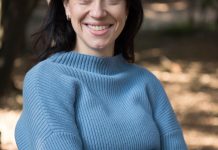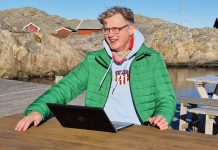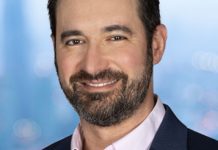In April 2018, EDF Renewables (EDFR) announced that its five North American entities, EDF Renewable Energy, EDF Renewable Services, EDF EN Canada, EDF EN Mexico, and groSolar would operate under one common brand. Additionally, EDFR announced that it would be organizing its business around three primary lines: Grid-Scale Power, Distributed Solutions, and Asset Optimization. Asset Optimization aligns Operations & Maintenance (O&M) with Asset Management under one executive vice president to leverage technical skills and operational expertise, with commercial and financial experience, to deliver the best value to asset owners. The leaders of the Asset Optimization group, Larry Barr, SVP of Operations & Maintenance, and Dan Summa, VP of Generation (i.e. head of EDFR’s Asset Management group), discuss their vision for the future and how the industry benefits from combining these two functions under one group.
What is the new scope that your combined Asset Optimization Group covers?
Barr: Asset Optimization combines two distinct groups within our organization of O&M and Asset Management. Our O&M group is focused on providing the best value to the project owner. Our Asset Management group is focused on “making the assets sweat.” There is a lot of commonality between the two groups. Combining them helps to continue and accelerate each of their separate primary objectives but also leverages the synergies between the two groups.
 Summa: The combined group will focus on maximizing the value of our generating assets and bringing new and innovative service offerings to an ever-increasing competitive market. The renewable space is becoming more and more complex and competitive, and it is imperative that we take a more holistic approach to extracting value from our assets — everything from market optimization to increased plant performance and efficiency.
Summa: The combined group will focus on maximizing the value of our generating assets and bringing new and innovative service offerings to an ever-increasing competitive market. The renewable space is becoming more and more complex and competitive, and it is imperative that we take a more holistic approach to extracting value from our assets — everything from market optimization to increased plant performance and efficiency.
Barr: Another important benefit will be improved communication between Operations and our other business units including Development and the Corporate Support groups. Our synergies will improve also as we are speaking with one voice instead of two. We’ve already seen better information sharing amongst all EDFR groups, which not only helps our operating assets but our development asset as well.
Could you give an example of how this will improve communication?
 Barr: Under the previous structure we had a lot more of an “us and them” mentality where every decision was viewed from two different perspectives with, potentially, different desired outcomes. Under the current approach, we are aligned with the same goals and direction, which eliminates time-consuming review and challenge processes, which, in the end, did not add value.
Barr: Under the previous structure we had a lot more of an “us and them” mentality where every decision was viewed from two different perspectives with, potentially, different desired outcomes. Under the current approach, we are aligned with the same goals and direction, which eliminates time-consuming review and challenge processes, which, in the end, did not add value.
What does EDF Renewables expect to gain from organizing the two groups under one leader?
Barr: The most obvious and short-term benefit would be a better understanding of the project needs and financials, elimination of some redundancy, better alignment of engineering support work for both groups, and faster decision making. We expect to extract additional value from the assets by leveraging the technical skills and operational expertise of O&M and the commercial and financial experience of the Asset Management group.
Summa: The Asset Management group can provide the O&M group with insight into services offerings that are attractive to asset owners, which in turn, they can then leverage in the competitive third-party space. The O&M group can assist the Asset Management group in maximizing the performance of its assets through its years of operational experience. Each group is very good at what they do, and combining the groups under one organization will only make them better.
How will this improve communication between Operations and other business units?
Summa: The increased communication and alignment between the groups is already producing results from eliminating unnecessary and cumbersome processes to enabling both groups to react quicker to operational challenges.
Barr: Combining the two groups has eliminated significant gaps and overlaps. In the past, sometimes we would be working on an engineering solution (for example) only to discover later that we were working on the same problem in parallel. The improved communication now allows us to be more aware of what the other group is working on and discover and capitalize on synergies before we act.
What effect will it have on your O&M and Asset Management third-party business?
Barr: Our goal remains to be the O&M provider that delivers the best value to asset owners. To do this, we need to make sure we excel on our own projects. As noted, the world is changing fast. We must continue to innovate in order to remain the best in class provider: new services, new technology, new know-how. We intend to remain a big player on the third-party O&M business. Providing services to others makes us better on our own projects (new know-how, more purchasing power, etc.). Conversely, being the best service provider to our internal customers means we can deliver more value to third parties. I see the two as synergetic.
%%0618-QA%%
Summa: Agreed, closer alignment between Asset Management & O&M will enhance O&M’s ability to bring the “owner” perspective to third parties.
How will this increase your ability to remain a big player in the third-party O&M business?
Barr: As previously discussed, this new alignment will significantly improve our ability to implement improvements in services, engineered solutions and even organizational structure resulting in getting these solutions to our third-party customers quicker than in the past. Additionally, having already implemented these things on our projects gives us the added advantage of using our own experience as a primary sales tool: “Yes, we know it will work because we’ve already tested it on our own projects.”
For more information, go to www.edf-re.com



























